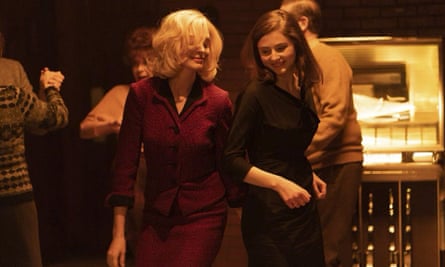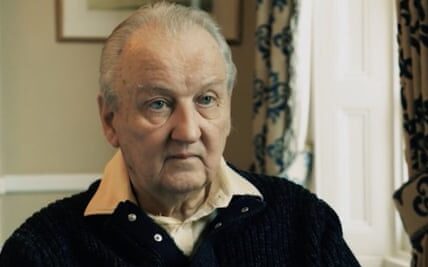Ottessa Moshfegh is drawn to flawed characters who lead intense lives and experience deep emotions. Her characters are driven by feelings of shame, desire, alcohol consumption, vivid imaginations, and sometimes the use of laxatives. In the past decade, this American author has released five novels and one collection of short stories. While her works may appear disjointed at first glance, as they range from medieval horror to 60s psychological thrillers, Moshfegh maintains a consistent theme throughout her writing. She focuses on isolated individuals who stand out not for their charm or talent, but for their willingness to reveal all of their unseemly habits and darkest desires to the reader. With the recent release of a film adaptation of Moshfegh’s novel “Eileen,” let’s take a look at her previous works.
The entry point
In the brief tale Nothing Ever Happens Here, a young man relocates from Utah to Los Angeles in pursuit of an acting career. He spends time with unconventional individuals such as the mentally unstable, the intoxicated, and those engrossed in romance novels. These characters and situations are representative of Moshfegh’s preferences, as she gravitates towards outcasts and oddities while intertwining the ordinary with the macabre. While not the most obvious entry point, her collection of short stories, Homesick for Another World, immerses readers into Moshfegh’s expansive narrative universe. Within these 14 stories, she introduces us to teachers struggling with alcoholism or recreational drug use, and children who seek salvation through murder by consuming poisoned berries. This compilation effectively captures Moshfegh’s unapologetic tone, which exposes the peculiarity hidden beneath mundane everyday life, evoking beauty in even the most dire situations. It also serves as a test for readers to determine their affinity towards Moshfegh’s larger body of work. Are you drawn to her portrayal of pimples, deodorant flakes, dead animals, and creepy neighbors, or do her bleak interpretations turn you away?
The page-turner
Selected as a finalist for the Booker prize in 2016, Eileen is a great starting point for readers who enjoy being led forward one clue at a time. In an infamous statement, Moshfegh revealed that she wrote Eileen with the intention of it becoming a commercial success, following the guidelines laid out in Alan Watt’s creative writing guide, The 90-Day Novel. She achieved her goal and created a story built on elements of noir, while also delving into themes of self-hatred and fixation. The novel takes place during a desolate New England winter in 1964, with Eileen serving as the secretary at a detention center for juveniles. In between spying on the boys masturbating and speculating about their troubled mothers (her own, like many of Moshfegh’s characters, is deceased), Eileen spends her time buying gin for her alcoholic father and attempting to control her body like a monster. She dreams of escaping, whether through love or by simply running away. When the glamorous education director, Rebecca, arrives at the prison, she offers Eileen the opportunity for both – becoming an enigmatic figure who Eileen would follow anywhere.

The Marmite one
Moshfegh’s writing is often described as lacking emotion or being cynical – showcasing the inner thoughts of indifferent young women. However, this is a simplistic view based solely on her novel My Year of Rest and Relaxation. In other works, the reader may also encounter unpleasant men or unpleasant wet nurses. Unlike her previous novel Eileen, which was filled with anger, Moshfegh’s third and most popular book explores the idea of numbing oneself with the help of a compliant doctor and a plethora of prescription drugs. The story follows a beautiful and privileged woman in her twenties who quits her meaningless job at an art gallery and decides to hibernate for a year like Sleeping Beauty. She hopes that by indulging in “good American sleep”, she will wake up to a better life. This novel is a satire on healthcare, a surprising 9/11 story, and a viral sensation on TikTok. While some may appreciate the dark humor and critiques of the art world, others may struggle to follow the unnamed character through her drug-induced haze and beyond.
The whodunnit
Similar to Eileen, Death in Her Hands quickly establishes its goal of piquing the reader’s interest. Vesta Gul, a 70-year-old widow, is walking her dog in the woods near her home when she discovers a note that reads, “her name was Magda. Nobody will ever know who killed her. It wasn’t me. Here is her dead body.” Despite not finding a body, Vesta becomes determined to uncover the truth about Magda’s fate using the internet and her own imagination as she delves into her memories for clues. Through this journey, she also reveals snippets of her unhappy past which led to her isolated life in a cabin at a closed Girl Scout camp. Like other Moshfegh protagonists, Vesta possesses a dark imagination and a distrust of others. However, Death in Her Hands delicately explores themes of reliability and storytelling, while also painting a poignant portrait of loneliness through Vesta’s stream of consciousness. Surprisingly, Vesta’s relationship with her dog, Charlie, stands out as one of the few uncomplicated loves in Moshfegh’s writing.
Bypass the advertisement for the newsletter.
after newsletter promotion
The most disgusting one of all
For readers who discovered Moshfegh through My Year of Rest and Relaxation, her latest novel Lapvona may have been surprising. However, it shouldn’t be, as it is the purest representation of her interests yet. Taking place in the feudal medieval realm of Lapvona, a fiefdom in an unspecified eastern European country, this novel is one long display of grotesque individuals committing heinous actions against each other. Topics such as cannibalism, incest, and unconventional use of grapes are explored without any boundaries. At the center of the story is Marek, a 13-year-old boy with a deformed spine, whose actions lead to a change in his social standing when he kills the lord’s son. While Moshfegh’s other novels often delve into the impulses and neuroses of her characters, exposing their flaws in close detail, Lapvona takes a wider approach to convey its messages about power and religion. As a result, it reads more like a tapestry of torture than a tightly controlled narrative, with the initial shock gradually fading away.
The overlooked gem
Moshfegh’s first published work, McGlue, follows the story of a 19th-century alcoholic sailor who may have murdered his lover. While studying for her MFA at Brown University, Moshfegh was inspired by an 1851 newspaper headline about a sailor from Salem who committed a similar crime in Zanzibar. McGlue explores themes that are common in Moshfegh’s writing, such as destruction, intoxication, restricted freedom, and bodily functions, but it stands out for its dreamlike and urgent writing style. Reminiscent of authors like Hilary Mantel and Jeanette Winterson, Moshfegh’s prose captures the disorientation of time and reality as experienced by the main character, McGlue, who has a head injury that causes his thoughts to leak out and strange visions to flood in. In one beautiful passage, he muses about filling his head with items that are exempt from import taxes, such as hay, oranges, lemons, and pineapples, as well as nautical objects like ship parts and lights. The reader is captivated by whatever fills McGlue’s mind – all the pain and fragmented memories that he shares.
Source: theguardian.com



